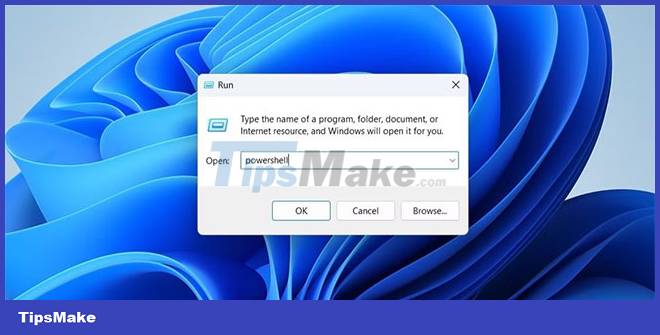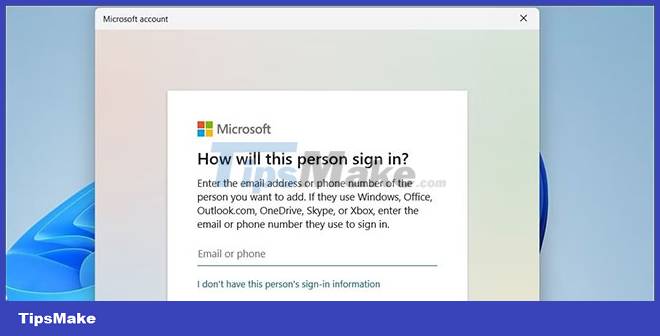What to do when Windows can't find PowerShell?
PowerShell is a handy tool that allows you to automate tasks, fix various errors, and manage several Windows installations. But what if it suddenly disappears from your computer?
If you use PowerShell regularly, the problem that Windows can't find it becomes a pain in the ass. Thankfully, it's possible to restore missing PowerShell with some troubleshooting tips. Detailed solution will be in the following article!
1. Make sure Windows PowerShell is enabled
On Windows, you can enable or disable optional features and programs from the Control Panel. To get started, you need to make sure that PowerShell is not disabled on your computer. Here's how to check.
- Press Win + R to open the Run dialog box.
- Type control in the box and press Enter to open the Control Panel.
- Click the drop-down menu in the top right corner to select Large icons.
- Go to Programs and Features .
- Click the Turn Windows features on or off link from the left pane.
- When the User Account Control (UAC) prompt appears, select Yes to continue.
- In the Windows Features dialog box , locate Windows PowerShell and select its check box.
- Click OK to save the changes.

Restart your computer afterwards, and then try launching PowerShell using the search menu.
2. Launch PowerShell with Run or File Explorer
If you can't open PowerShell via the Search menu, you can try using the Run dialog box. Press Win + R to open the Run dialog box. Type powershell in the box and press Enter. If you want to launch PowerShell with admin rights, press Ctrl + Shift + Enter .

You can also open PowerShell from the File Explorer address bar. To do so, press Win + E to open File Explorer. Type PowerShell in the address bar and press Enter.
3. Create a desktop shortcut for PowerShell
Windows may not be able to open PowerShell without knowing the correct path to the PowerShell executable. If that's the case, you can manually locate the PowerShell executable on your computer and create a desktop shortcut to it. Here are the steps to take.
- Right-click the Start icon to open the Power User menu and select File Explorer from the list.
- Navigate to This PC.
- Go to C: > Windows > SysWOW64 and find the WindowsPowerShell folder .
- Open the WindowsPowerShell folder and go to the v1.0 folder.
- Double click on the PowerShell executable and see if it works. If it is, right-click it and select Send to > Desktop (create shortcut) .

You can then use the newly created desktop shortcut to launch PowerShell. For more convenience, you can assign keyboard shortcuts to PowerShell.
4. Scan your computer for corrupted system files

Corrupt or problematic system files can also interfere with Windows operation and prevent PowerShell from launching. Fortunately, your Windows PC comes with a few built-in tools, such as SFC (System File Checker) and DISM (Deployment Image Servicing and Management) that can help you with such problems. If Windows has corrupted system files, running these tools will fix the problem.
5. Update Windows PowerShell
If Windows still can't find PowerShell at this point, there may be a problem with the PowerShell application itself. You could try updating the PowerShell app to see if that makes any difference.
To update PowerShell on Windows:
- Press Win + X to open the Power User menu.
- Select Terminal (Admin) from the list.
- When the User Account Control (UAC) prompt appears, select Yes.
- Type the following command and press Enter.
winget install --id Microsoft.Powershell --source winget 
Windows will download and install the latest version of PowerShell. You will then be able to access PowerShell.
6. Create a new user account

Maybe the issue of not opening PowerShell is limited to your current user account. In that case you can create and switch to a new user account and see if this works.
 How to fix webcam error 0xA00F4289 in Windows 10/11
How to fix webcam error 0xA00F4289 in Windows 10/11 Drive letter is not available on Windows: Causes and solutions
Drive letter is not available on Windows: Causes and solutions How to fix 'Input Signal Out of Range' error on Windows
How to fix 'Input Signal Out of Range' error on Windows How to fix Nvidia GeForce driver error not downloading/installing
How to fix Nvidia GeForce driver error not downloading/installing How to fix error code 0x0 0x0 in Windows 11
How to fix error code 0x0 0x0 in Windows 11 How to fix computer crashes, Windows not responding
How to fix computer crashes, Windows not responding